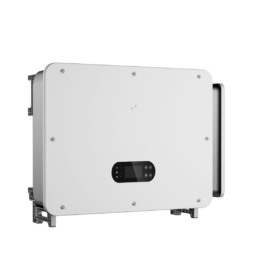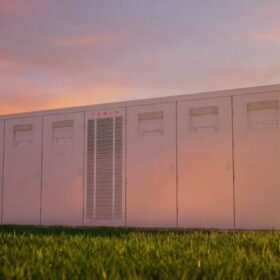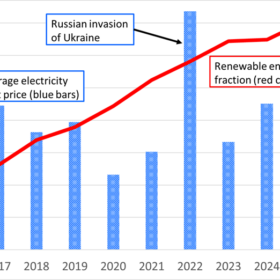Building on its strategic collaboration with the Max Planck Institute of Colloids and Interfaces (MPI), announced in March 2025, and the successful Sodium-Sulfur (Na-S) coin cell results shared on 17 April, Gelion has now successfully also integrated MPI’s advanced materials (Gelion Sulfur Cathode) into lithium-sulfur (Li-S) coin cells, delivering industry-leading results.
Using coin cells, the industry-standard platform for battery testing, the Company has now demonstrated outstanding power and cycling capabilities using Gelion’s proprietary Sulfur Cathode developed in collaboration with MPI, in both Na-S and Li-S cells.
Key Initial Results
- Longer battery life: Li-S coin cells constructed with thin layers of the Gelion Sulfur Cathode have passed 1,000 cycles under aggressive 1C testing conditions (One-hour full charge and discharge). Still cycling well following 1,100 cycles, the cells exhibit remarkable performance:
-
- Higher energy retention: The cells retain 90% (1490 mAh/g(S)) of theoretical capacity when cycled at C/10 (10-hour charge and 10-hour discharge). This provides evidence of the longevity performance required for application of the Gelion Sulfur Cathode to mass market e-mobility.
- Higher power performance: The cells display 75% (1240 mAh/g(S)) of theoretical capacity when discharged at 10 C (6-min discharge). This provides evidence of the high-power performance required for processes such as vertical takeoff and landing (VTOL) in drone applications, and fast charge or rapid acceleration in e-mobility.
The high percentage retention (meaning the percentage sulfur in the cathode that retains full accessible viability) against theoretical capacity after significant cycling, and even at high power levels, is a factor of the stability of the Gelion Sulfur Cathode material and puts Gelion’s technology on track to strong performance/market fit.
Going forward, Gelion will update on activities which focus on using commercially relevant cathode thicknesses (i.e., high areal capacities), validating performance parameters necessary for real-world adoption across the broader energy storage market.
Significant progress toward commercialisation
These findings mark a significant advancement in the commercialisation of Li-S battery technology, a next-generation alternative to traditional lithium-ion battery systems. Li-S batteries offer 60% – 70% higher Specific Energy Density to lithium-ion, with the added benefits of lower cost materials and improved sustainability.
To date, widespread adoption has been hindered by challenges such as poor cycle life and limited high-rate performance. Gelion’s breakthrough addresses both issues, demonstrating long-term stability and high-power delivery. This paves the way for Li-S to become a viable solution for applications ranging from electric vehicles to drones.
Following this advancement, Gelion has now demonstrated outstanding performance in both Na-S and Li-S coin cells, aimed at a broad range of applications such as drones, EVTOL aircraft, mass-market electric vehicles, and Battery Energy Storage System (BESS) solutions.
John Wood, CEO of Gelion said:
“These results reflect a pivotal step forward in unlocking the potential of lithium-sulfur batteries. By combining Gelion’s technology and engineering expertise with the world-class research of the Max Planck Institute of Colloids and Interfaces, we are demonstrating both high power performance and durability alongside the characteristic high specific energy of Lithium Sulfur.”
“This positions us strongly on a path to meet the demands of future mobility and stationary energy storage solutions with a sustainable, high power, high-capacity, high cycle life, battery technology”.
Glossary
| Ah | Ampere hours. A measure of capacity stored in the cell. The larger the number the higher the capacity. |
| mAh/g(S) | The unit mAh/g(S) stands for milliampere-hours per gram of Sulfur (with S indicating “Sulfur”). It is a measure quantifying how many electrons (in mAh) can be stored per gram of Sulfur. |
| Cycle life | The number of full charge and discharge cycles a battery can complete before its capacity falls below a specified level, typically 80% of the original capacity. Higher cycle life indicates longer-lasting performance. According to standards set by the United States Advanced Battery Consortium LLC (USABC), a cycle life exceeding 1,000 cycles is essential for transportation applications and equally critical for stationary energy storage. |
| Specific Energy density (Wh/kg) | The ratio of energy stored per unit weight i.e. Watt-hours per kilogram. The higher the number the lighter the battery. |






By submitting this form you agree to pv magazine using your data for the purposes of publishing your comment.
Your personal data will only be disclosed or otherwise transmitted to third parties for the purposes of spam filtering or if this is necessary for technical maintenance of the website. Any other transfer to third parties will not take place unless this is justified on the basis of applicable data protection regulations or if pv magazine is legally obliged to do so.
You may revoke this consent at any time with effect for the future, in which case your personal data will be deleted immediately. Otherwise, your data will be deleted if pv magazine has processed your request or the purpose of data storage is fulfilled.
Further information on data privacy can be found in our Data Protection Policy.